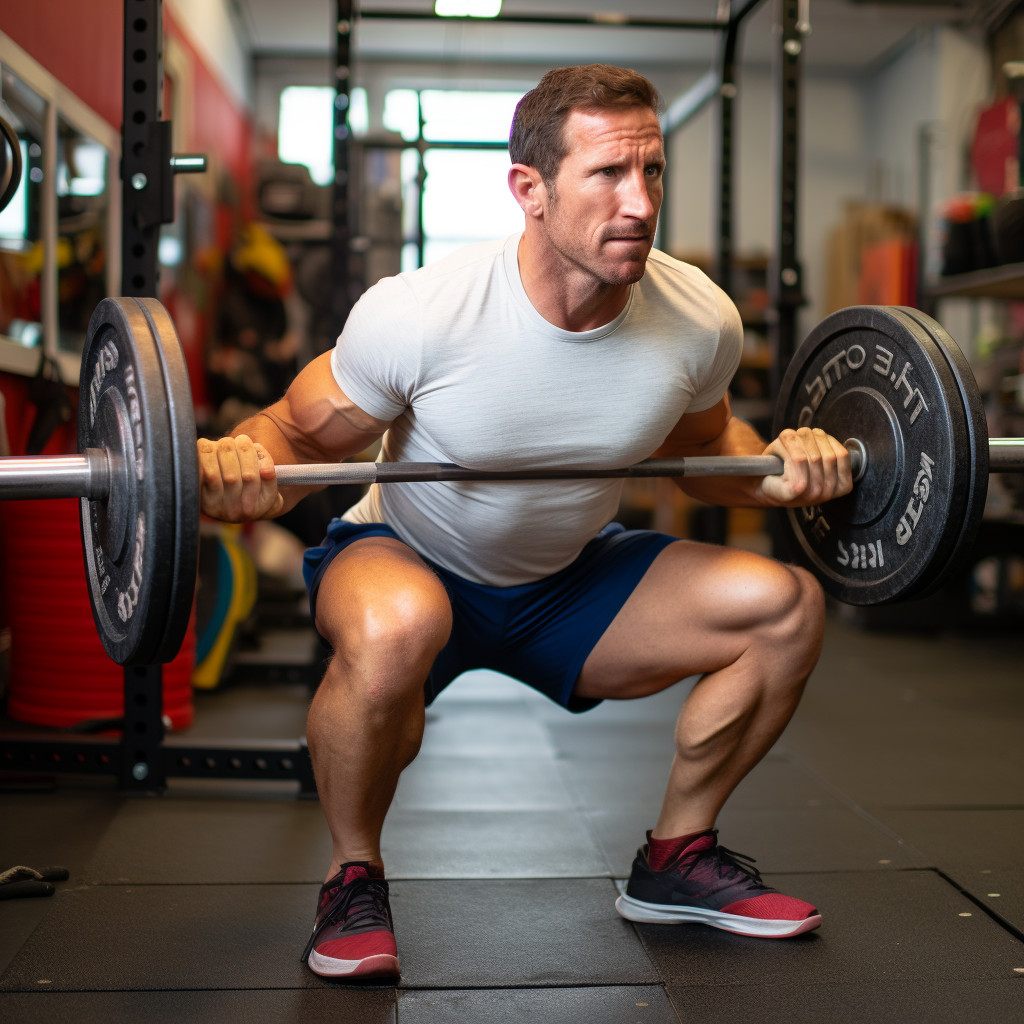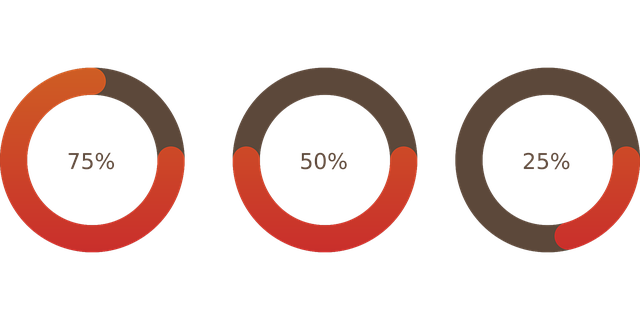Men’s fitness over 40 is a topic that has gained a lot of attention in recent years. As men age, their bodies undergo a lot of changes that can make it harder to stay fit and healthy.
However, with the right approach, men over 40 can maintain their fitness and enjoy a healthy lifestyle. In this article, we will discuss 15 rules that men over 40 can follow to stay fit and healthy.
Table of Contents
Here Are the 15 Rules to Live By for Mens Fitness Over 40:
Understanding Mens Fitness Over Their 40s
The first rule of men’s fitness over 40 is to never skip the warm-up. As we age, our muscles and tendons become less flexible and more prone to injury.
Therefore, it is essential to spend 10 to 15 minutes warming up before starting any weighted exercise routine. A light motion warm-up is recommended, instead of static stretching, which can cause more harm than good.
Another important rule is to focus on strength training. As men age, they start to lose muscle mass, which can lead to a decrease in strength and mobility.
Strength training can help to build and stabilizing muscles, improve bone density, and increase metabolism. Men over 40 should aim to strength train at least two to three times a week, focusing on compound exercises that work multiple muscle groups at once.
As men age, their bodies undergo various changes that can affect their fitness and overall health. Understanding the impact of age on fitness and the importance of staying fit after 40 can help men make informed decisions about their lifestyle choices.
The Impact of Age on Fitness

As men enter middle age, their bodies experience various changes that can affect their fitness levels. Some of the most common changes include a decrease in muscle weight, a decrease in bone density, and a decrease in metabolism.
These changes can make it harder for men to maintain their fitness levels and can increase their risk of developing health problems. But, most men over 40s might ask, “how much exercise do I need?”
However, it’s important to note that these changes are not inevitable and can be slowed down or even reversed with regular exercise and a healthy lifestyle. By staying active, and burn fat, and eating a balanced diet, men can maintain their fitness levels and reduce their risk of developing health problems.
Importance of Staying Fit After 40
Staying fit after 40 is crucial for maintaining overall health and reducing the risk of developing health problems. Regular exercise can help men maintain their muscle weight, bone density, and metabolism, which can help them stay healthy and active as they age.
In addition to physical health benefits, regular strenuous exercises for men can also have a positive impact on mental health. Exercise has been shown to reduce stress, improve mood, and boost cognitive function, which can help men maintain their overall well-being.
Overall, staying fit after 40 is essential for maintaining a healthy lifestyle and reducing the risk of developing health problems. By staying active and eating a balanced diet, men can maintain their fitness levels and enjoy a healthy and active lifestyle well into their later years.
Building a Balanced Fitness Routine
When it comes to building a balanced fitness routine, men over 40 should focus on a combination of cardiovascular exercises, power training, and flexibility and balance exercises for men. This will not only help them with weight loss, but also give them strong and healthy overall men’s health.
By incorporating these three types of exercises for men into their workout routine, men over 40 can maintain their health, improve their fitness levels, and prevent injuries.
Cardiovascular Exercises

Cardiovascular exercises are important for men over 40 because they help improve heart health, increase endurance, and burn calories. Running, cycling, swimming, and brisk walking are all great cardiovascular exercises.
Men over 40 should aim for at least 150 minutes of moderate-intensity cardio per week. High-intensity interval training (HIIT) is also a great option for men over 40 who want to challenge themselves and improve their fitness levels.
Strength Training
Power training is essential for men over 40 because it helps build and maintain muscle weight, prevent age-related muscle loss, and improve bone density.
Men over 40 should focus on compound exercises like squats, deadlifts, bench presses, and rows, which work multiple muscle groups at once. They should also incorporate bodyweight exercises like push-ups, pull-ups, and planks into their routine. Men over 40 should aim for at least two power training sessions per week.
Flexibility and Balance Exercises
Flexibility and balance exercises are important for men over 40 because they help improve range of motion, prevent injuries, and improve balance and coordination. Yoga, Pilates, and stretching exercises are all great options for improving flexibility and balance.
Men over 40 should aim to incorporate flexibility and balance exercises into their routine at least two times per week.
In addition to these three types of exercises, men over 40 should also make sure to include a proper warm-up and cool-down in their good workout routine.
A warm-up should include light cardio and dynamic stretching to prepare the body for exercise, while a cool-down should include static stretching and light cardio to help the body recover and prevent injury.
Overall, building a balanced fitness routine for men over 40 requires a combination of cardiovascular exercises, strength training, and flexibility and balance exercises. By incorporating these exercises into their routine, men over 40 can maintain their health, improve their fitness levels, and prevent injuries.
Essential Exercises for Men Over 40
When it comes to fitness over 40, it’s essential to focus on exercises that will help maintain strength, mobility, and flexibility. Incorporating compound exercises, multi-joint exercises, and exercises that target major muscle groups can help men over 40 stay fit and healthy.
Deadlifts and Squats

Deadlifts and squats are two of the best exercises for building overall strength and muscle mass. These exercises target the lower body, specifically the glutes, hamstrings, and quads.
When performing deadlifts and squats, it’s important to focus on form and technique to avoid injury. Using a barbell or dumbbell bench press can add resistance and make these exercises more challenging.
Pushups and Pulls
Pushups and pulls are great upper body exercises that target the chest, shoulders, back, and arms. These exercises can be done using bodyweight or with weights such as dumbbells or resistance bands. One-arm rows and presses are also great exercises to include in a workout routine for men over 40.
Lunges and Calf Raises
Lunges and calf raises are excellent exercises for targeting the lower body instead the upper body, specifically the glutes, hamstrings, quads, and calves.
These full range exercises can be done using bodyweight or with weights such as dumbbells or barbells. When performing lunges and calf raises, it’s important to focus on form and technique to avoid injury.
Incorporating these essential exercises into a workout routine can help men over 40 maintain strength, mobility, and flexibility. It’s important to focus on form and technique to avoid injury and to gradually increase resistance and intensity to continue making progress.
Avoiding Injuries and Ensuring Recovery

As men age, their muscles and tendons become less flexible and more prone to injury. Therefore, it is crucial to take steps to prevent injuries and ensure proper, high speed recovery. This section will cover some essential tips to help older adults avoid injuries, deal with soreness and fatigue, and recover properly.
Proper Form and Technique
One of the most effective ways to avoid injuries is to use proper form and technique during exercise. Improper technique can put unnecessary stress on joints and muscles, leading to injuries.
Therefore, men over 40 should focus on maintaining proper posture and alignment during exercise and avoid overexerting themselves.
Importance of Rest and Recovery
Rest and recovery are essential for injury prevention and muscle growth. Adequate rest allows the entire body to repair and rebuild muscle tissue, while recovery techniques like stretching and foam rolling can help reduce muscle soreness and improve mobility. Moreover, great exercise also allows proper blood flow,
Men over 40 should aim to get 7-9 hours of sleep each night and take rest days between workouts to allow their bodies to recover properly.
Dealing with Soreness and Fatigue
Soreness and fatigue are common after a workout, especially for men over 40. However, there are several ways to deal with these symptoms and prevent injury.
Men over 40 can use recovery tools like foam rollers, compression leggings, and electronic muscle stimulation devices to speed up the healing process and reduce muscle soreness. Additionally, they should listen to their bodies and slow down or modify their workouts if they feel fatigued or experience pain.
In conclusion, older adults can avoid injuries and ensure proper recovery by using proper form and technique, taking rest days, and using recovery tools and techniques. By following these tips, men over 40 can maintain their fitness levels and avoid injury, allowing them to enjoy a healthy and active lifestyle.
Nutrition for Men Over 40
Maintaining a healthy diet is essential for men over 40 to maintain their health and fitness. Proper nutrition can help prevent chronic diseases such as heart disease, diabetes, and cancer. Here are some key aspects of nutrition that men over 40 should focus on:
Importance of Protein

Protein is essential for building and repairing muscle tissue, which is especially important for men over 40. As men age, their muscle weight decreases, and their bodies become less efficient at using protein.
It is recommended that men over 40 consume at least 1 gram of protein per kilogram of body weight per day. Good sources of protein include lean meats, fish, eggs, beans, and nuts.
Hydration and Water Intake
Staying hydrated is crucial for maintaining good health, especially for men over 40. Dehydration can lead to a range of health problems, including kidney stones, constipation, and even cognitive impairment.
Men over 40 should aim to drink at least 8-10 glasses of water per day. Other sources of hydration include fruits, vegetables, and soups.
Incorporating Fruits and Whole Grains
Fruits and whole grains are an essential part of a healthy diet for men over 40. They provide essential vitamins, minerals, and fiber that can help prevent chronic diseases.
Men over 40 should aim to consume at least 5 servings of fruits and vegetables per day, and at least half of their grains should be whole grains. Good sources of whole grains include brown rice, quinoa, and whole wheat bread.
In conclusion, proper nutrition is essential for men over 40 to maintain their health and fitness. Focusing on protein, hydration, and incorporating fruits and whole grains can help prevent chronic diseases and maintain overall health.
Maintaining Motivation and Setting Goals
Setting Realistic Goals
Setting goals is an essential part of any fitness journey, but it’s important to set realistic goals to avoid becoming discouraged. Men over 40 should aim to set goals that align with their current fitness level and lifestyle.
For example, if a man has never run a mile, setting a goal to run a marathon in a few months is not realistic. Instead, setting a goal to run a 5K in a few months is more achievable and can help build momentum towards larger goals.
Staying Motivated
Maintaining motivation can be a challenge for men over 40, but there are strategies that can help. One effective strategy is to find a workout buddy or join a fitness group. This can provide accountability and support, making it easier to stick to a fitness routine.
Another strategy is to mix up workouts to prevent boredom and keep things interesting. Men over 40 should also focus on finding workouts that they enjoy, as this can help increase motivation and make it easier to stick to a routine.
Dealing with Setbacks
Setbacks are a natural part of any fitness journey, and it’s important for men over 40 to know how to deal with them. It’s important to remember that setbacks are not failures, but simply opportunities to learn and grow. When faced with a setback, men over 40 should take a step back and reassess their goals and fitness routine.
It may be necessary to adjust goals or make changes to a fitness routine to better align with current abilities and lifestyle. It’s also important to focus on the progress that has been made rather than dwelling on setbacks, as this can help maintain motivation and energy.
Maintaining motivation and setting realistic goals are key to achieving fitness success for men over 40. By staying motivated, setting achievable goals, and learning how to deal with setbacks, men over 40 can achieve their fitness goals and maintain a healthy lifestyle without becoming depressed or discouraged.
Advanced Techniques for Men Over 40
As men age, their bodies require more specialized workout techniques to achieve the same level of fitness as they did in their younger years. Advanced techniques such as supersets, finishers, push-pull workouts, and resistance band training can help men over 40 achieve their fitness goals.
Understanding Supersets and Finishers
Supersets are a workout technique where two exercises are performed back-to-back with no rest in between. This technique can help increase the intensity of a workout and save time.
Finishers are short, high-intensity exercises performed at the end of a workout to push the body to its limits. They can include exercises such as burpees, mountain climbers, or jumping jacks.
Push-Pull Workouts
Push-pull workouts involve alternating between exercises that primarily target pushing muscles (chest, shoulder joints, triceps) and pulling muscles (back, biceps). This technique can help prevent muscle imbalances and overuse injuries. An example of a push-pull workout could include push-ups, bench press, shoulder press, lat pulldowns, and rows.
Incorporating Resistance Bands
Resistance bands are an excellent tool for men over 40 because they provide a low-impact workout that can help prevent joint pain and injury.
Resistance bands can be used to add extra resistance to bodyweight exercises or to perform traditional weightlifting exercises. They are also portable and can be used anywhere, making them a convenient option for men with busy schedules.
Volume
Volume refers to the total amount of work performed during a workout, including sets, reps, and weight lifted. As men age, their bodies may require more volume to achieve the same level of muscle growth as they did in their younger years. However, it is important to increase volume gradually to avoid injury and overtraining.
By incorporating advanced techniques such as supersets, finishers, push-pull workout routines, and resistance band training, men over 40 can achieve their fitness goals and maintain a healthy lifestyle.
Building Muscle After 40
As men age, they may find it more challenging to build and maintain muscle weight. However, with the right approach, it is possible to continue building muscle after 40. Here are some tips to help men over 40 achieve muscle.
Understanding Muscle Growth After 40
One of the main challenges of building muscle after 40 is that the body’s ability to synthesize protein decreases with age. This means that it may take longer for muscles to recover after a workout routines, and it may be more difficult to build muscle weight. However, it is still possible to build muscle after 40 with the right approach.
Targeting Different Muscle Groups
When it comes to building muscle after 40, it is essential to target different muscle groups. This means including exercises that target the chest, back, arms, shoulders, legs, and glutes. By targeting different muscle groups, men over 40 can ensure that they are building muscle mass evenly across their body.
Importance of Compound and Isolation Exercises

Compound exercises, such as weighted squats, deadlifts, and bench presses, are an excellent way to build muscle mass after 40. These exercises work multiple muscle groups at once, which can help men over 40 save time while still building muscle weight.
Isolation exercises, such as bicep curls and tricep extensions, can also be effective for building muscle after 40. These exercises target specific muscle groups and can help men over 40 build muscle weight in areas where they may be weaker.
In conclusion, building muscle after 40 is possible with the right approach. By targeting different muscle groups and including compound and isolation exercises in their workouts, men over 40 can continue to build and maintain muscle weight.
Choosing the Right Fitness Equipment
When it comes to Men’s Fitness Over 40, choosing the right fitness equipment is crucial for achieving the desired results. Here are some tips for selecting the right equipment:
Choosing the Right Dumbbells
Dumbbells are an essential part of any fitness routine. When selecting dumbbells, it is important to consider the free weight, material, and grip. The free weight of the dumbbell should be appropriate for the individual’s fitness level and goals.
The material of the dumbbell can be either metal or rubber-coated. Rubber-coated dumbbells provide better grip and are more durable. The grip of the dumbbell should be comfortable and non-slip to prevent injury.
Understanding the Role of Barbells
Barbells are another important piece of equipment for power training. They are used for exercises such as squats, deadlifts, and bench dips, bench presses. When selecting barbells, it is important to consider the free weight, length, and thickness.
The free weight of the barbell should be appropriate for the individual’s fitness level and goals. The length and thickness of the barbell should be suitable for other exercises being performed.
Importance of Resistance Bands
Resistance bands are a versatile piece of equipment that can be used for a variety of exercises. They are perfect for individuals who prefer to exercise at home or while traveling. When selecting resistance bands, it is important to consider the resistance level, material, and length.
The resistance level should be appropriate for the individual’s fitness level and goals. The material of the resistance band should be durable and non-slip. The length of the resistance band should be suitable for the exercises being performed.
In conclusion, selecting the right fitness equipment is crucial for achieving the desired results in Men’s Fitness Over 40. By considering the weight, material, and grip of dumbbells, the weight, length, and thickness of barbells, and the resistance level, material, and length of resistance bands, individuals can ensure they are using the right equipment for their fitness routine.
Creating a 12-Week Fitness Guide
Planning a 12-week fitness guide is crucial to achieving fitness goals for men over 40. This guide should include a combination of resistance training, cardiovascular exercise, and flexibility training to help maintain muscle weight, increase strength, and improve mobility.
Planning Your Workouts
When creating a 12-week fitness guide, it is important to plan your workouts in advance. This will help ensure that you are targeting all of the major muscle groups and giving each muscle group enough time to recover between workouts.
A good rule of thumb is to aim for two to three power training sessions per week, with at least one day of rest in between.
In addition to power training, cardiovascular exercise should also be included in your fitness plan. This can include activities such as running, cycling, or swimming. Aim for at least 150 minutes of moderate-intensity cardiovascular exercise per week, or 75 minutes of high-intensity exercise.
Flexibility training is also important for men over 40, as it can help improve mobility and prevent injury. Incorporate stretching and yoga into your fitness plan to help improve flexibility and balance.
Tracking Your Progress

Tracking your progress is essential when following a 12-week fitness guide. This will help you stay motivated and see the progress you are making towards your fitness goals. Consider keeping a fitness journal or using a fitness tracking app to monitor your workouts and progress.
In addition to tracking your workouts, it is also important to track your nutrition. Eating a balanced diet that includes plenty of protein, healthy fats, and complex carbohydrates can help fuel your workouts and support muscle growth.
Adjusting Your Fitness Plan
As you progress through your 12-week fitness guide, it may be necessary to adjust your fitness plan to continue seeing results. This can include increasing the intensity of your workouts, adding new exercises, or changing the number of sets and reps you perform.
It is also important to listen to your body and make adjustments as needed. If you are experiencing pain or discomfort during your workouts, it may be necessary to modify your exercises or take a break to allow your body to recover.
Overall, creating a 12-week fitness guide can help men over 40 achieve their fitness goals and maintain a healthy lifestyle. By planning your workouts, tracking your progress, and making adjustments as needed, you can stay on track and see the results you are looking for.
Frequently Asked Questions
What are some effective exercises for men over 40 to get in great shape?
Men over 40 should focus on exercises that build strength, flexibility, and endurance. Some effective exercises include weightlifting, bodyweight exercises, and cardio. Compound exercises like squats, deadlifts, bench press and bench dips, and pull-ups are great for building overall strength. Yoga and stretching can help improve flexibility, while running, swimming, or cycling can improve endurance.
How many days a week should a 40 year old man work out?
A 40 year old man should aim to work out at least three to four days a week. This will help increase muscle mass, improve cardiovascular health, and maintain overall fitness. It’s important to give the body enough time to rest and recover between workouts to avoid injury.
What is the best workout split for men over 40?
There is no one-size-fits-all answer to this question, as the best workout split will depend on the individual’s fitness level, goals, and preferences. However, a common split for men over 40 is a full-body workout two to three times a week, with a focus on compound exercises. This can be supplemented with cardio and flexibility training on the other days.
What are some bodyweight exercises that are suitable for men over 40?
Bodyweight exercises are a great way for men over 40 to build strength and improve flexibility without putting too much strain on the joints. Some effective bodyweight exercises include push-ups, squats, lunges, planks, and burpees. These exercises can be modified to suit different fitness levels and can be done at home or outside.
What are some dietary changes that can help men over 40 get in shape?
To get in shape, men over 40 should focus on eating a balanced diet that is high in protein, healthy fats, and complex carbohydrates. It’s important to avoid processed foods, sugary drinks, and alcohol, as these can lead to weight gain and other men’s health issues. Instead, opt for whole foods like fruits, vegetables, lean meats, nuts, and seeds.
How can men over 40 transition from a sedentary lifestyle to an active one?
Transitioning from a sedentary lifestyle to an active one can be challenging, but it’s important for overall health and fitness.
Men over 40 can start by incorporating small changes into their daily routine, such as taking the stairs instead of the elevator, going for a walk during lunch breaks, or doing some stretching exercises while watching TV. Gradually increasing the intensity and frequency of exercise can also help build endurance and strength.
Related Article: Body Mass Index Guide

